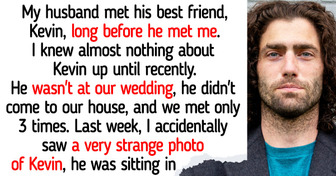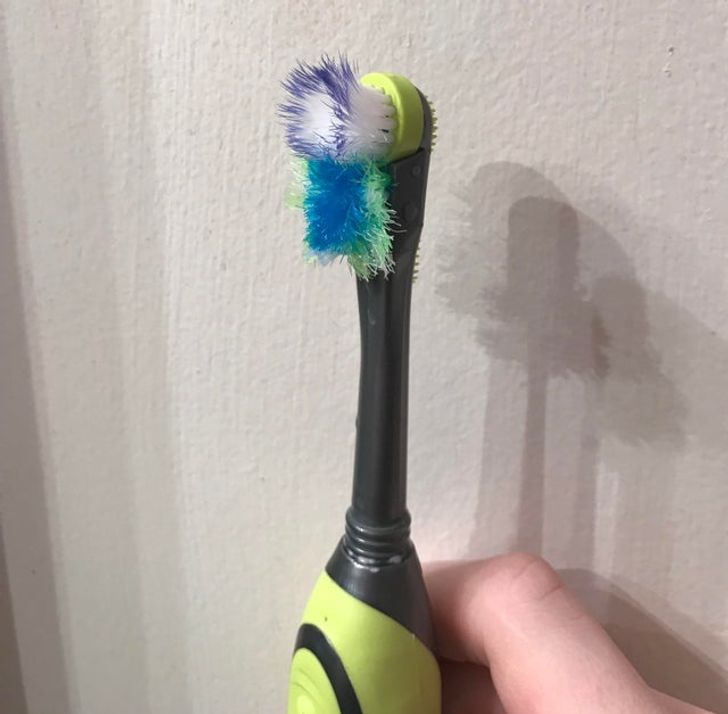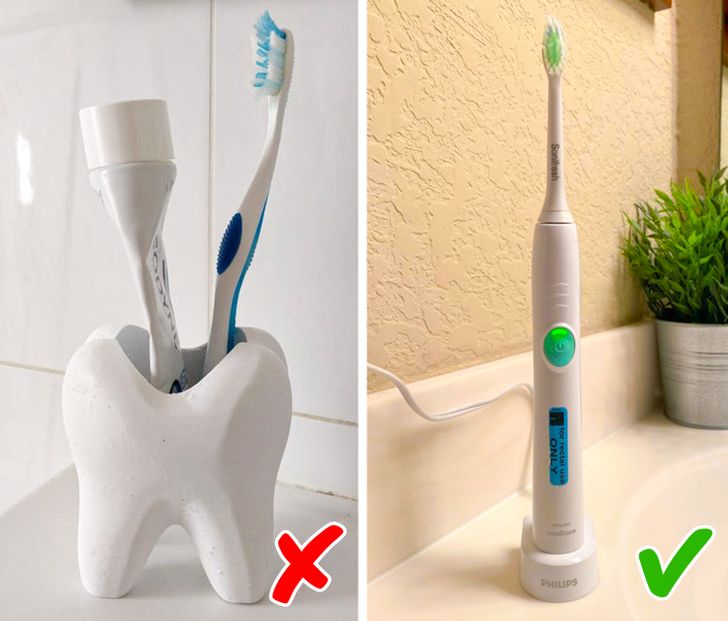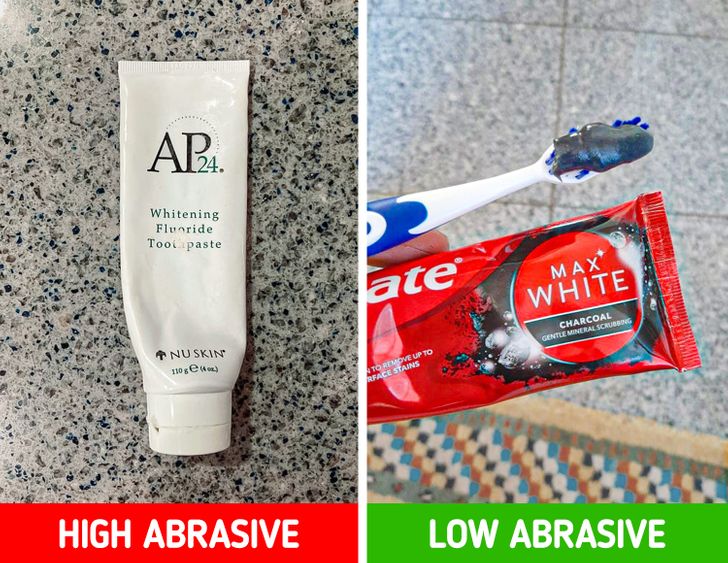4 Signs You’re Brushing Your Teeth Too Hard, and 4 Ways You Can Fix It
Some people think that in order to remove plaque from their teeth, they need to brush really hard. However, this is far from the truth since plaque is so soft, you could remove it with a piece of cloth. The reason you need a toothbrush is simply because a cloth can’t reach all the corners of your mouth. So it’s not tons of pressure you need, but rather, a thorough brushing everywhere around your mouth.
Bright Side wants to warn you about the 4 most common signs of over-brushing along with 4 effective ways to address the problem.
PROBLEMS
1. Your gums are starting to recede.

Each and every one of our teeth is protected by enamel, which can be severely harmed by over-brushing. And by harming enamel, our gums may start to recede, exposing the roots of our teeth to great danger. If your teeth reach that point, you might need to add fillings, root canals, or even extract teeth that are no longer healthy. According to dentists, about 10%-20% of the population around the world has damaged their gums due to over-brushing.
2. Your teeth are way too sensitive.
Similar to receding gums, teeth can become sensitive when the enamel is brushed away. It’s simply because the roots of your teeth are left unprotected and, therefore, their nerves are hit hard. If you find it super hard to drink very hot or very cold drinks and bite on hard food, then you need to visit your doctor. You also need to start brushing your teeth in a more calm and soft way.
3. The bristles of your toothbrush look worn out.
Toothbrush abrasion is the most common cause of dental abrasion, meaning that many people brush their teeth the wrong way. It’s either because they brush too hard or they use hard-bristled toothbrushes, and this damages the teeth. So if your toothbrush looks like it needs to be replaced every few weeks, then you’re using it too forcefully. Yes, you need to replace it every 3-4 months, but it should still look quite healthy.
4. The teeth near your gums aren’t very bright or shiny.
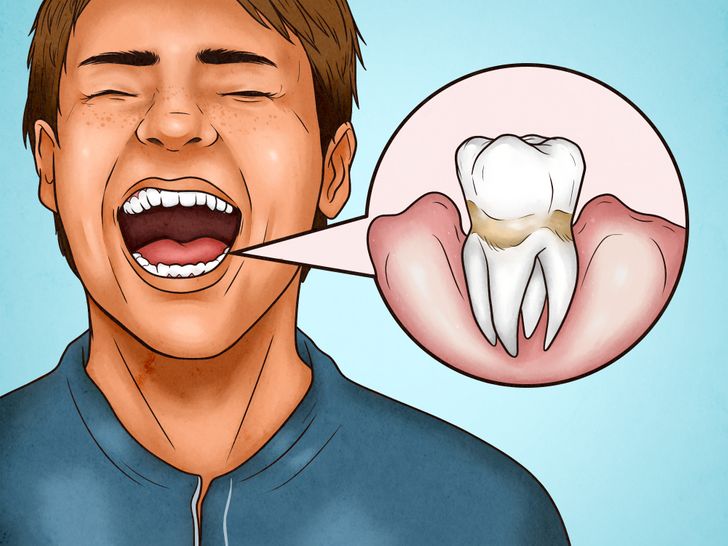
The reason that teeth are a bit darker under your gums is that they’re not protected by any enamel. That’s why when your gums start receding, the teeth showing from underneath are more yellow or darker in color. Without having enamel to protect them, they’re exposed to all kinds of germs and bacteria. Thus, the problem goes even deeper, compromising the entire health of your teeth.
SOLUTIONS
1. Use a toothbrush with soft bristles.
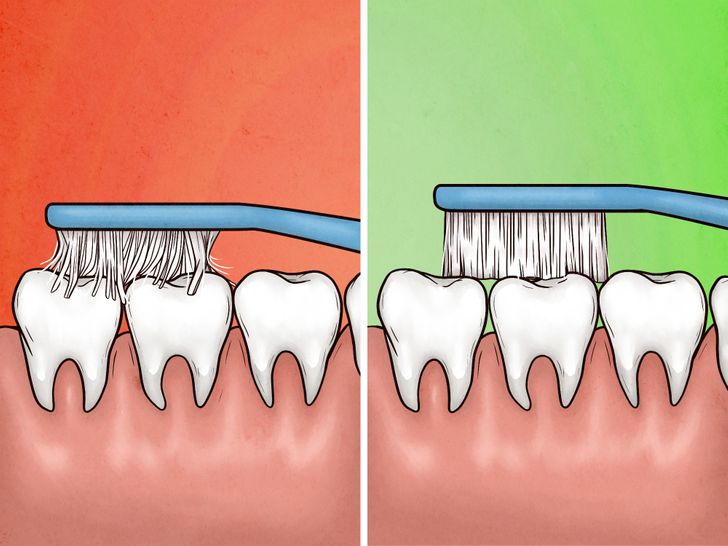
It’s not only the speed you’re brushing with, but also the quality of the toothbrush that harms your teeth. Opting for soft bristles is the first step, then you have to reconsider your brushing method. You should keep your toothbrush at a 45-degree angle and start brushing gently back and forth. You can try holding it with your non-dominant hand so the pressure you apply is lessened.
2. Use an electric toothbrush.
One wonderful feature of many toothbrushes is that they notify you when you apply too much pressure. The light on it will change from green to red, and it will start making a different noise, similar to an alert. So you need to make sure that whilst you brush, the light remains green, letting you know to apply the correct amount of pressure. However, not all electric toothbrushes have this sensor, which means that you’ll have to check the box first.
3. Hold your toothbrush with only 3 fingers.
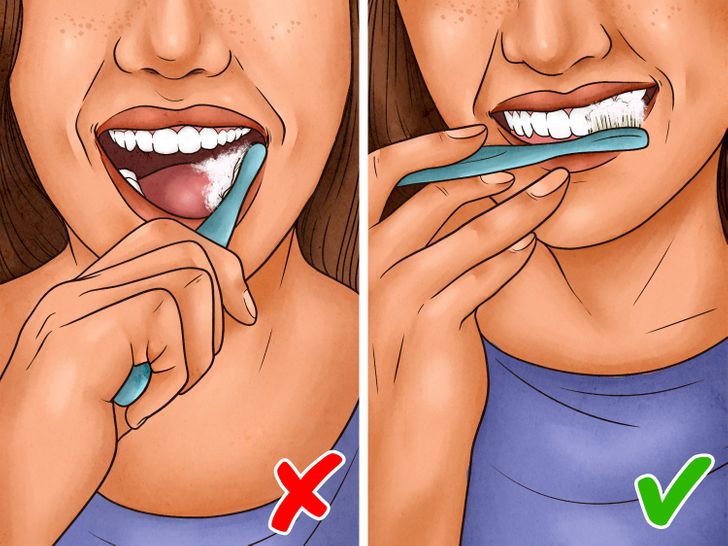
Holding your toothbrush like a pen will help you apply the right pressure to your teeth. This is because you can easily control the force you’re putting on your hand. On the contrary, when you hold your toothbrush with your fist, you can easily lose track of your force and overbrush. It’s not the pressure that will clean your teeth — the bristles have to be able to get in between all the teeth, removing plaque and other bacteria.
4. Make sure your toothpaste is low-abrasive.
We need our toothpaste to be abrasive enough so that it does its job and cleans our teeth as it should. However, high abrasive toothpaste does more than that and removes the enamel from our teeth. Instead of reading labels and searching to see how abrasive the ingredients are, there is another trick you can use.
Simply take a piece of foil and rub a small amount of your toothpaste on it. Then rinse it with plenty of water and see if there are any scratches left on the foil. The number of scratches will indicate just how abrasive the toothpaste is.
For those of you who suffer from the symptoms above, what has helped you to overcome the problem and recover the health of your teeth?
Comments
my tatoooooooooooo

Related Reads
I Gave My House to My Son — He Betrayed Me in a Horrific Way
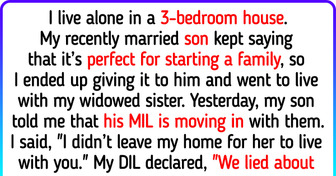
An Artist Draws Relatable Comics That Can Make Any Girl Yell, “Gosh, That’s My Life!”
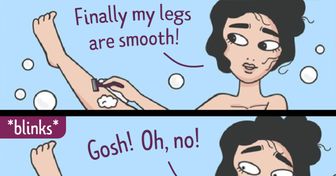
I Got a Big Inheritance From My Grandparents, My Mom Begs Me to Use It to Help My Suffering Family, I Refuse

I Charged My DIL for the Food Her Kids Ate
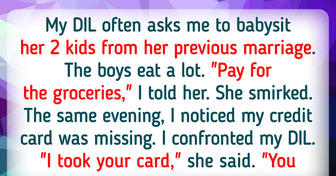
14 People Who Made Disturbing Discoveries About Their Partner Years Into Their Relationship
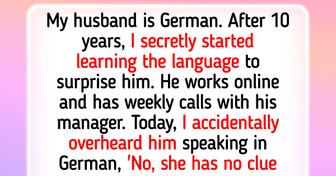
14 Disturbing Truths That Ruined People’s Trust
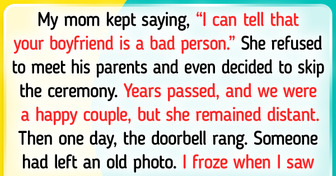
13 Thanksgiving Dramas That Were Juicier Than the Turkey
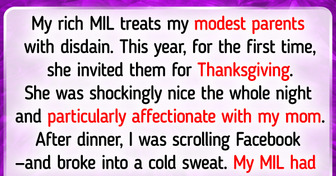
My Stepchildren Refuse to Accept Me, So I Laid Down the Truth They Didn’t Want to Hear

14 Innocent Souls Who Learned a Lesson the Hard Way

12 People Share Vile Events That Still Haunt Them to This Day
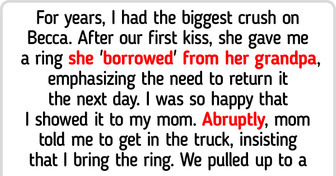
17 Families Whose Stories Are More Scandalous Than a Soap Opera
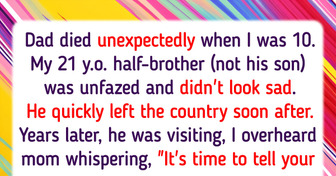
My Husband Was Hiding His Best Friend From Me, I Found Out Why, and I’m Livid
